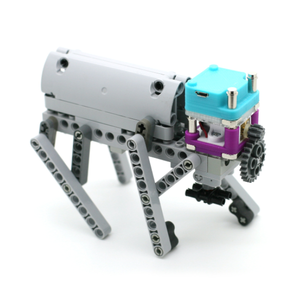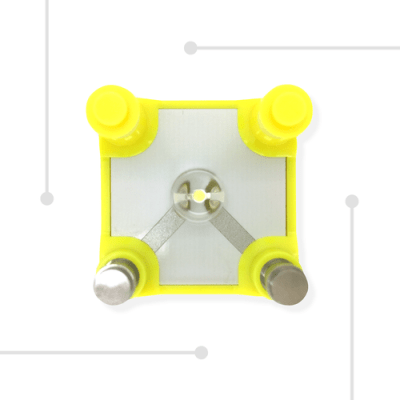Nate MacDonald and John Schuster spent more than a decade in schools looking to teach students some basic principles of circuitry and engineering — but realized that just giving them a battery and a motor and saying “go” wasn’t enough.
So the two have started Tenka Labs, a new company that designs small blocks that operate as parts of circuits that they can connect to LEGO bricks. There are three units: a battery, a motor and a light, all of which can be connected to build creations like cars — and even a creepy moving stuffed rabbit that MacDonald showed me — in an attempt to teach kids some of the early principles of engineering. The company has raised $2.1 million in seed financing for its launch.
“Students we were teaching about basic circuitry didn’t really understand basic circuitry,” co-founder Nate MacDonald said. “When you got to people soldering, they were just blindly soldering. We wanted to find a product that would help teach them basic circuitry. Eventually as it progressed we kind of had a product. We didn’t want to just go after the teachers, we wanted it to be available for all kids and parents. We took that big concept of the block and two nails and brought it down to this size.”
The blocks operate exactly like you’d expect with units of a circuit — connecting them in sequence gets a different result than connecting them in parallel. They have small pylons on the corners that automatically snap to other units to create a circuit. For now, the company is focusing on those three elements, but it’s natural that some other basic parts would come down the line (like a resister, for example).

The idea here is that Tenka Labs wants to catch students and give them a better foundation before they graduate to something more sophisticated like a protoboard and start building more advanced circuits. MacDonald wants to target both teachers and classrooms — which will likely get some kind of bulk discount — in addition to just parents. For now, everything is sold in kits, like one that uses all three to create a car. The kits retail at around $60.
Each is designed to be just the size of LEGO blocks and snap into various creations beyond the kits that they’re offering. The kits are available for reservation and pre-order right now. “Kids are familiar with it, they’re comfortable with it,” MacDonald said. “Every kid has a pile of LEGOs.”
Schuster also said that the company isn’t necessarily looking to compete against what he calls “screen time,” when a kid might be playing with a smartphone or tablet. But there has to be a place in the day where they’re away from screens and using their imagination to build things, he said.
“We know that we’re not against screen time, I’m not opposed, but there’s a balance,” Schuster said. “But we think with the maker movement there’s a drive toward tactile play, and being able to make mistakes. The awesome thing about making creativity, you’re gonna have 6 kids building 6 different things.”
Tenka Labs is, of course, not alone in trying to build these sort of early engineering training products. There are other companies like LittleBits building similar tools to teach STEM basics to students before they start graduating to more advanced concepts, and that company raised $44.2 million in June on 2015. Schuster wasn’t shy to say that there will definitely be competition going forward, and now the company’s next step is to show off the units at the New York Toy Fair to get things started.
“We want it to be analog, we want this to be something the kids need to learn the basics before they go to a digital product,” Schuster said. “They need to understand motor and gears. We integrate with the most common building block so we can build in three dimensions. We work with kids enough to know that you have to really ramp up the play factor. We want to help them go on this adventure. It’s not, say, ‘hey we’re gonna learn about circuits, you each have to build a car.'”
